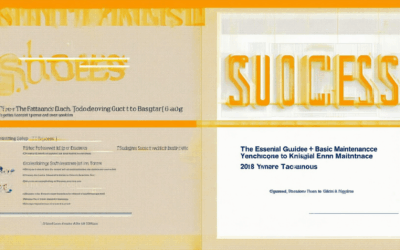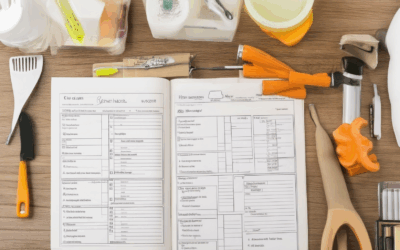Preventative care ideas are the cornerstone of a healthier, happier life, offering strategies that empower individuals to take control of their well-being. By focusing on proactive measures, individuals can reduce the risk of chronic diseases, enhance their quality of life, and lead more fulfilling existences. Whether it’s adopting preventive care guidelines, understanding the importance of regular check-ups, or exploring innovative approaches like preventive care Deutsch, the benefits extend far beyond physical health. This article delves into actionable strategies, real-life examples, and practical tips that highlight how preventative care ideas can transform lives. From promoting preventive care statistics to overcoming barriers, we’ll explore how small, consistent efforts can lead to significant long-term health improvements. Join us as we unlock the top preventative care ideas and discover how they can become a lifelong commitment to better health.
Key Takeaways
- Educate and Raise Awareness: Empower homeowners with knowledge through checklists, workshops, and success stories to understand the importance of preventive care.
- Schedule Routine Maintenance: Offer tailored maintenance plans with reminders and incentives to ensure consistent and reliable care.
- Utilize Technology: Integrate smart home devices and apps for real-time monitoring and personalized recommendations to enhance preventive efforts.
- Provide Accessible Tools: Offer DIY repair guides and curated lists of trusted contractors for both hands-on and professional assistance.
- Stay Informed and Updated: Keep up with industry trends and present innovative solutions through webinars and articles to stay ahead in preventive care strategies.
- Financial Incentives: Reward participation with cash, gift cards, or discounts to reduce costs and encourage regular check-ups.
- Non-Financial Rewards: Motivate individuals with points systems, exclusive access, or public recognition to foster engagement.
- Loyalty Programs: Develop rewards programs offering discounts and exclusive content to encourage long-term commitment to preventive care.
- Gamification: Transform preventive care into a fun activity with badges and competition to increase participation rates.
- Community Support: Build accountability through group challenges and peer networks to inspire and support each other in health goals.
- Educational Resources: Provide complementary materials like e-books to add value and encourage healthy living practices.
- Telehealth Incentives: Offer discounted telehealth visits as rewards to support follow-up care and monitoring.
- Public Recognition: Celebrate achievements with certificates or social media shout-outs to boost motivation and encourage others.
- Referral Programs: Incentivize referrals by rewarding both the referrer and the new participant to expand outreach.
- Health Tracking Tools: Integrate with apps or wearables to offer rewards for achieving preventive care milestones.
- Vaccination Programs: Prioritize community immunity by promoting vaccines to protect individuals and reduce disease spread.
- Routine Health Screenings: Enable early detection and better outcomes through regular check-ups and critical health evaluations.
- Lifestyle Modifications: Adopt healthier habits like balanced diets and exercise to reduce chronic disease risks.
- Health Education Campaigns: Promote informed decision-making with educational programs on nutrition, safety, and mental health.

What are some examples of preventive care?
Preventive care involves taking measures to maintain and protect health, property, or equipment through routine checks, inspections, and maintenance. Here are some examples:
- Home Systems Maintenance
- Regular HVAC maintenance: Inspecting and replacing air filters, checking ductwork, and ensuring the system is running efficiently.
- Checking plumbing systems: Inspecting pipes for leaks, testing water pressure, and ensuring proper drainage.
- Garden maintenance: Pruning trees, trimming grass, and inspecting irrigation systems to prevent issues.
- Regular health screenings and vaccinations to prevent illnesses.
- Wearing seatbelts and following safety protocols to prevent accidents.
- Maintaining a safe home environment by installing smoke detectors and carbon monoxide detectors.
- Oil changes, tire rotations, and brake inspections to ensure safe driving conditions.
- Checking fluid levels and ensuring all lights and signals are functioning properly.
- Scheduling regular service appointments to prevent breakdowns.
- Inspecting roofs for damage and fixing leaks promptly to prevent water damage.
- Trimming trees and removing dead branches to reduce fire risks.
- Testing electrical systems and ensuring all outlets are functional and safe.
By implementing these preventive care practices, individuals and organizations can extend the lifespan of their assets, reduce repair costs, and ensure a safer, more reliable environment.
Preventative Strategies for Home Maintenance
- Scheduled Inspections and Check-Ups – Regularly inspect your home systems like HVAC, plumbing, and electrical components to catch issues early. This helps prevent costly repairs and ensures everything runs efficiently.
- Maintain Equipment – Keep your tools and appliances in good working condition. Replace worn-out parts before they cause damage. This extends the lifespan of your equipment and saves money in the long run.
- Weatherproofing – Seal gaps around windows and doors to keep out drafts and moisture. This improves energy efficiency and protects your home from water damage during rainy seasons.
- Regular Cleaning and Filtering – Clean gutters, filters, and vents regularly to prevent blockages and ensure proper airflow. This maintains the integrity of your systems and promotes better indoor air quality.
- Security Measures – Install and regularly test smoke detectors, carbon monoxide detectors, and security systems. This helps protect your home and family from potential threats.
- Emergency Preparedness – Create an emergency kit with supplies like a flashlight, first aid kit, and important documents. Knowing how to shut off utilities and have a plan in place can save time and reduce stress during emergencies.
- Professional Guidance – Utilize resources from trusted professionals like those at Sams Maintenance to get personalized advice and ensure your strategies are effective. Their expertise can help you avoid common mistakes and stay informed about best practices.
- Stay Informed – Keep up with educational materials and articles from reputable sources like Home Depot and Lowe’s . Learning about the latest techniques and trends can empower you to take better care of your home.

Preventing Disease: 5 Effective Strategies
To safeguard your health and reduce the risk of疾病, adopting a proactive approach is essential. Here are five proven strategies to help you stay healthy:
- Prioritize Vaccination
Vaccines are a cornerstone of disease prevention. They protect against numerous illnesses, including influenza, measles, and hepatitis. Regular immunizations ensure your body is equipped to fight off pathogens effectively. - Adopt a Balanced Diet
A nutritious diet rich in fruits, vegetables, lean proteins, and whole grains supports your immune system. Avoid processed foods and excessive sugar, which can weaken your defenses. Staying hydrated is also crucial for overall health. - Practice Good Hygiene
Simple acts like washing hands frequently with soap and water can significantly reduce the spread of疾病. Carry hand sanitizer as a backup and clean surfaces regularly to maintain a germ-free environment. - Engage in Regular Physical Activity
Exercise boosts your immune system and improves circulation, making it easier for your body to fight infections. Aim for at least 30 minutes of moderate exercise most days of the week. - Limit Exposure to Harmful Substances
Quitting smoking and reducing alcohol consumption are vital steps in disease prevention. Smoking damages your lungs and weakens your immune system, while excessive alcohol can impair your ability to fight infections.
By integrating these strategies into your daily routine, you can take charge of your health and enjoy a longer, healthier life. Remember to consult healthcare professionals for personalized advice and stay informed about preventive measures in your community.

How to Promote Preventive Care
Preventive care is essential for maintaining the longevity and efficiency of your home systems. Here’s a step-by-step guide to effectively promoting preventive care:
- 1. Educate and Raise Awareness
- Create educational resources such as checklists, guides, and videos to empower homeowners with knowledge.
- Host workshops or webinars to discuss the importance of preventive maintenance and how it saves costs in the long run.
- Share success stories or case studies highlighting the benefits of preventive care to inspire action.
- 2. Schedule Routine Maintenance
- Offer scheduled maintenance plans tailored to individual needs, ensuring consistency and reliability.
- Use digital tools like calendars or reminders to help homeowners stay on track with their preventive care tasks.
- Provide incentives such as discounts or rewards for completing routine maintenance on time.
- 3. Utilize Technology
- Integrate smart home devices to monitor system health in real-time, sending alerts for needed maintenance.
- Develop mobile apps or online platforms for easy scheduling, tracking, and management of preventive tasks.
- Use data analytics to identify patterns and provide personalized recommendations for homeowners.
- 4. Provide Accessible Tools and Resources
- Offer DIY repair guides and tutorials for common issues, enabling homeowners to handle small fixes themselves.
- Curate a list of trusted contractors and service providers for those who prefer professional assistance.
- Distribute informational pamphlets or brochures during customer visits or events.
- 5. Stay Informed and Updated
- Keep up with industry trends and advancements in preventive care to offer the most effective solutions.
- Subscribe to newsletters or follow blogs for updates on maintenance tips and best practices.
- Present webinars or articles featuring the latest innovations in home maintenance technology.
By implementing these strategies, you can effectively promote preventive care, helping homeowners protect their investments and enjoy longer-lasting comfort and efficiency in their homes.
How to Incentivize Preventative Care
Incentivizing preventative care is a powerful strategy to encourage healthier lifestyles and routine check-ups. Below are proven methods to motivate individuals to prioritize their health:
- Financial Incentives : Offer gift cards, vouchers, or cash rewards for completing preventive screenings such as mammograms, colonoscopies, or blood pressure checks. Some providers also offer copay discounts or wellness benefits.
- Non-Financial Rewards : Implement points systems where participants earn rewards for attending health fairs, completing fitness challenges, or participating in preventive care. These rewards could include exclusive access to health resources or recognition on a leaderboard.
- Loyalty Programs : Develop a rewards program where patients who consistently engage in preventative care receive discounts, freebies, or exclusive health-related content. This encourages long-term behavior change.
- Gamification : Transform preventive care into a fun and competitive activity. For instance, patients can earn badges or levels for completing milestones like their first mammogram or flu shot. Tools like MyFitnessPal apply gamification principles effectively.
- Community Support : Create group challenges or peer support networks where members encourage each other to attend preventive care appointments. This fosters accountability and shared responsibility.
- Educational Resources : Provide complementary materials such as e-books or guides on healthy living in exchange for completing preventive tests. This adds value beyond the incentive itself.
- Telehealth Incentives : Offer discounted or free telehealth visits as a reward for completing initial preventive screenings. This supports follow-up care and monitoring.
- Public Recognition : Celebrate participants through public acknowledgment, such as certificates or social media shout-outs, to boost motivation and encourage others to join.
- Referral Programs : Incentivize existing clients to refer friends and family by offering bonuses for both parties involved. This expands reach and engagement.
- Health Tracking Tools : Integrate with health tracking apps or wearables that monitor preventive care activities. Offer rewards for achieving milestones tracked by these tools.
By combining financial and non-financial incentives with community support and educational resources, organizations can effectively encourage individuals to prioritize preventative care, leading to better health outcomes and reduced healthcare costs.

Best Example of Preventive Approach to Health Care
Preventive health care focuses on taking measures to maintain or improve health and prevent diseases or health issues from occurring. One of the most effective examples of a preventive approach is:
- Vaccination Programs : Vaccines are among the most successful tools in preventive medicine. They protect individuals from infectious diseases like measles, influenza, and hepatitis. Regular immunizations ensure collective immunity, reducing the spread of illnesses in communities.
- Routine Health Screenings : Regular check-ups, including blood pressure, cholesterol, and cancer screenings, help detect potential health issues early, allowing for timely intervention and better outcomes.
- Lifestyle Modifications : Adopting healthier lifestyles, such as balanced diets, regular exercise, and stress management techniques, significantly reduce the risk of chronic conditions like diabetes and heart disease.
- Health Education Campaigns : Programs focused on educating individuals about topics like nutrition, safe sex practices, and mental health promote informed decision-making and healthier behaviors.
These initiatives are often led by organizations like the Centers for Disease Control and Prevention (CDC) , which provide evidence-based guidelines and resources to promote preventive care nationwide.
By prioritizing preventive measures, individuals and communities can reduce the burden of illness and enhance overall well-being. Staying informed and proactive about health is key to leading a longer, healthier life.




0 Comments